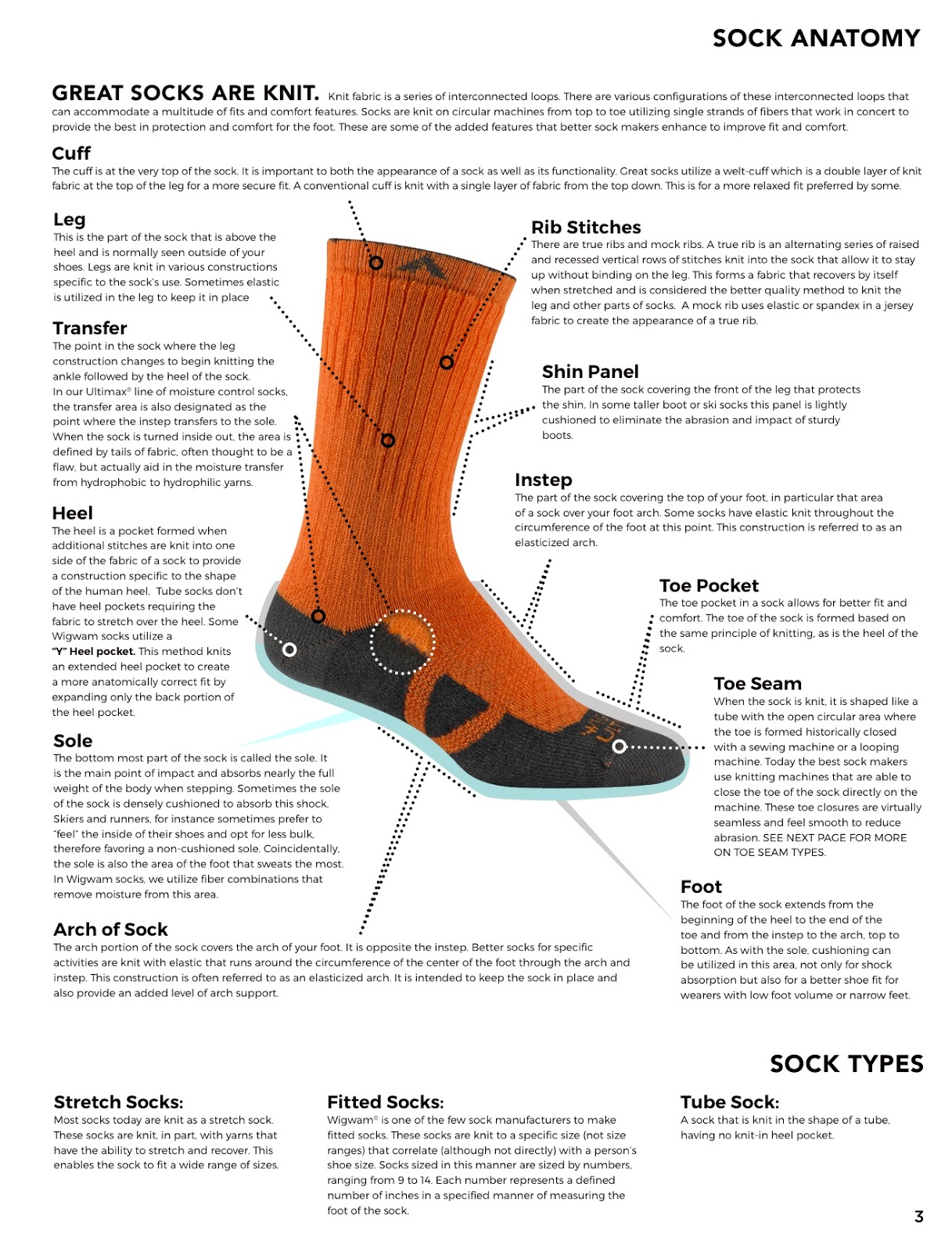
Before you go on a hike, it’s important to make sure that your feet are comfortable and well-protected. This means you should apply as much care and attention to choosing appropriate outdoor socks as you would to picking the perfect pair of shoes or boots.
In general, it makes sense to consider the length of your walk, the kind of terrain you’ll be covering, and other physical environmental factors you might have to contend with. To choose a sock type that suits these conditions well, you’ll want to keep the following factors in mind:
The Length of the Socks
Some hiking socks can be so short that you can’t even see them over your shoes. Other types can be so long that they almost reach your knees. That said, how do you choose the right sock length?
To determine the ideal sock length, consider the cut of your footwear. Taller socks are a must for high-cut shoes or boots, as they can keep your skin from rubbing against the cuffs and causing painful abrasions. That said, you don’t necessarily need super long socks each time you head to your favorite trail.
Crew socks, which extend a few inches above the ankle, are typically considered the standard hiking sock. They’re just tall enough to protect your feet and lower legs from being abraded by most pairs of hiking boots. Many pairs of outdoor crew socks on the market today are also made with compression technology to encourage blood circulation, which prevents swelling and discomfort. You may want to pick up a pair of men’s compression crew socks if you’re worried about getting achy feet during your hike.
For lighter hikes and outdoor walks, lower-cut footwear and shorter socks may be preferable to more heavy-duty gear. No-show short socks and ankle-high socks should serve you well enough on days when you don’t feel like roughing it. Their reduced coverage will also make it easier for you to stay cool in the summer months.
Knee-high hiking socks are intended mainly for mountaineering, as they protect your calves and shins from the abrasions that large, bulky boots can cause. They also help keep the legs warm in more intense conditions, such as when you’re traversing snowy slopes or climbing at night.
The Thickness of the Socks
A sock’s thickness determines how warm it will be and how much cushioning it will provide your foot with. The appropriate thickness for you will depend mostly on the season and the weather, as well as the nature of the hiking trip you intend to go on.
The lightest socks have very little cushioning to maximize breathability and are mainly meant to be worn in hot environments. Many of these socks are liner socks, which can be worn on their own during light hikes or under heavier pairs of hiking socks to help with insulation or moisture wicking.
In general, lightweight socks prioritize breathability and comfort and are thus ideal for use in warm conditions. These socks incorporate a little padding in key places like the ball of the foot and the heel area, but are designed mainly to keep your feet cool and dry.
Midweight socks are warm enough to use in moderately cool to cold weather. They’re typically more padded than lighter varieties in the heel and the ball of the foot, which makes them especially useful for extended hikes or hikes across rough mountain trails.
Heavyweight socks are the warmest, thickest, most thoroughly padded socks available. You’ll mainly want them for mountaineering and for long hiking trips that will take you across especially cold and difficult terrain.
The Material of the Socks
Rather than being made from a single material, hiking socks more commonly incorporate a blend of different natural and synthetic fibers. Sock manufacturers blend different fabrics together to achieve a balance of desirable properties, such as a fast drying time, durability, comfort, and the ability to disperse or retain heat. Given these ideal fabric characteristics, the following are some of the most common materials used for hiking socks:
Wool
The most popular and highly recommended hiking sock material, wool has excellent cushioning and temperature-regulating properties. It’s also a naturally antimicrobial fabric, which means it’s less likely to retain unpleasant smells than synthetic fabrics. Most wool socks today are a blend of merino wool and synthetic materials. The former material is softer and less itchy than ordinary wool, while the latter improves durability and encourage fast drying.
Silk
Silk provides a smooth, luxurious feel, and its superior insulation and moisture-wicking capabilities make it a favorable sock material. It’s often the main material used for making liner socks.
Synthetic Materials
Synthetic fibers are often blended with natural materials to boost the resulting fabric’s durability and elasticity, hasten drying, and improve insulation. Some go-to synthetic materials for outdoor socks include polyester, nylon, rayon, and spandex.
Bamboo
Bamboo fibers are hollow, which makes garments that incorporate them super-absorbent and breathable. These characteristics have made bamboo an increasingly popular clothing material in recent years, and it’s now common to find it in sleepwear, underwear, workout clothes, and—you guessed it—socks. Bamboo also grows fast and is easy to cultivate, which makes it a sustainable and eco-friendly alternative to many other natural fabrics.
A good pair of socks can make or break your hiking experience. The last thing you want, after all, is to come away from a highly anticipated adventure with sore, sweaty feet and nasty blisters. Stock up on outdoor socks that best suit your hiking needs and you’ll soon be ready to conquer any kind of terrain.

